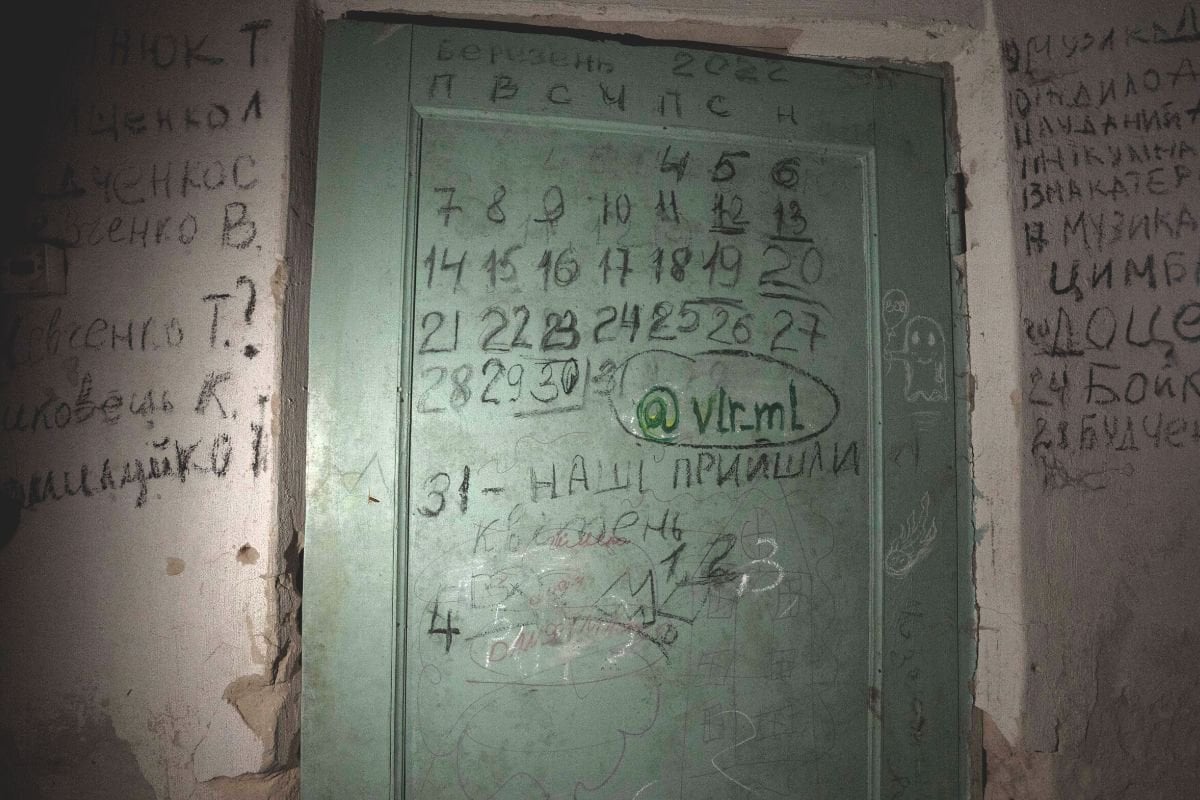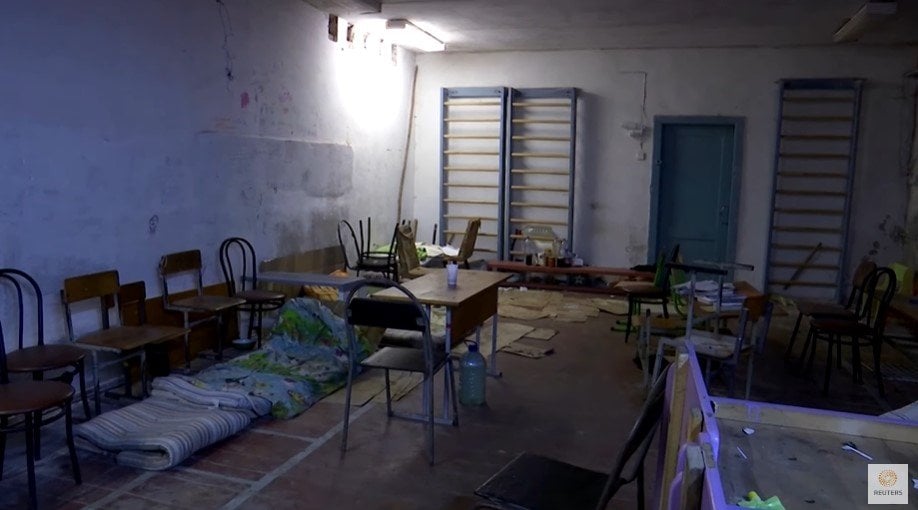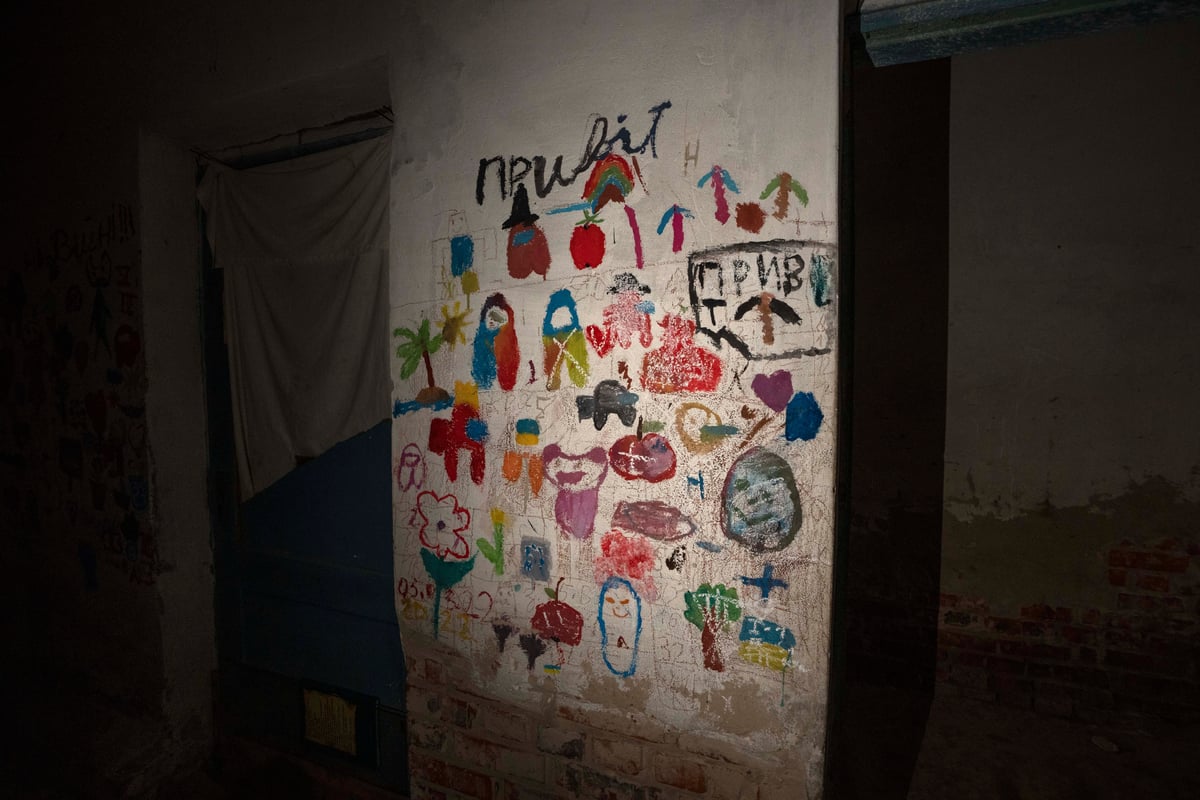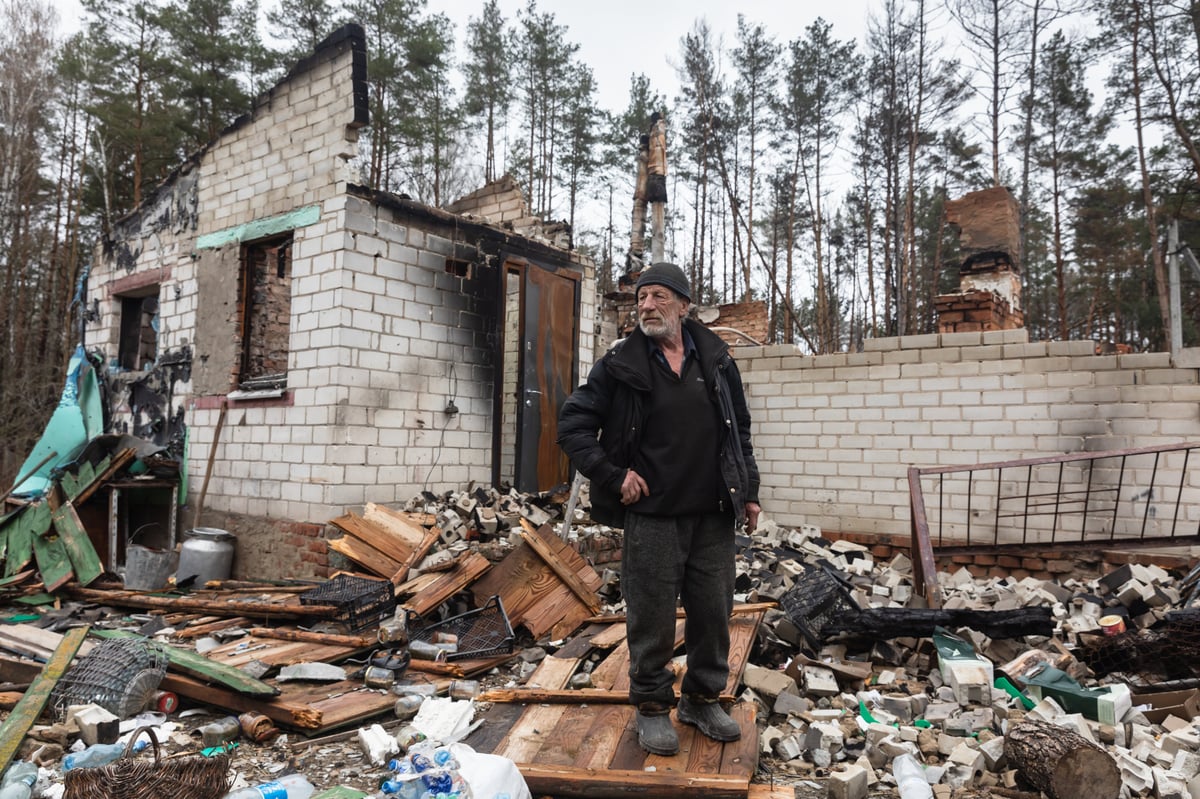
This post includes graphic depictions of extreme violence and will not be suitable for some readers.
One person died every three days on average.
Usually, the very old.
The door leading to the basement prison was used by those inside to keep track.
On the right, the names of those who perished due to the conditions. On the left, the names of those shot dead by Russians. In the middle, the days they'd been in captivity.
For around 28 days in March this year, 371 Ukrainian civilians were held hostage in a secondary school basement in the village of Yahidne, north of Kyiv. Russian invaders used the school as their command centre, keeping the locals in a cramped space beneath them as a 'living shield.'
Watch: Yahidne residents speak of basement ordeal. Post continues after video.
They ranged in age from five months to 93 years old. At least 60 children were among them.
Seven were killed outside, likely executed. Hostages would be taken upstairs to be interrogated, and they'd never return.
Ten died from inhumane conditions; there was no space to move, limited access to fresh air, food or water, no electricity and nowhere to go to the toilet. They had to take it in turns to sleep, as there wasn't enough room in the 197 square metre area for them all to do so overnight.




Top Comments